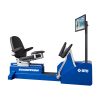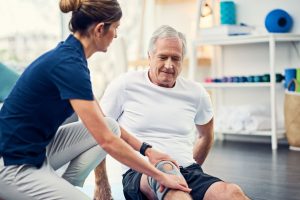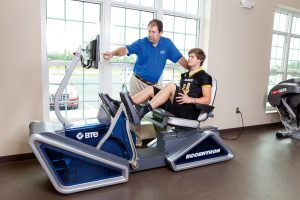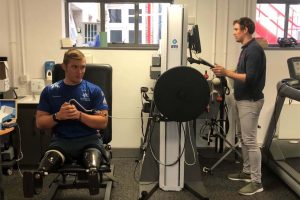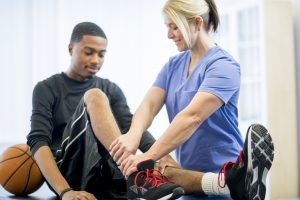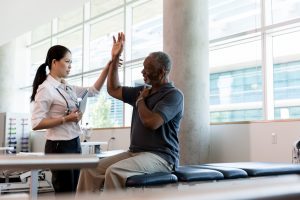
Research Shows Eccentric Exercise – Not Needling, Surgery, Splints – Best for Tendinopathy
Clinical ResearchThe data showed that each intervention provided some level of improvement. But exercise was the most consistently effective option. More specifically, eccentric exercise was the single most effective treatment for all joints in the study
Literature Review of Tendinopathy
In May of 2020, researchers at the University of Nebraska and Temple University produced a study looking at clinical management of tendinopathy1. This systemic review of systemic reviews aimed to “determine the ability of therapeutic interventions to improve pain and dysfunction in patients with tendinopathy regardless of type or location.” The review only included randomized control trials looking at treatments for tendinopathy.
Twenty-five reviews met the authors’ criteria, looking at tendinopathies at various areas in the body. Patients reported their experience using pain scales, which determined how effectively various treatments worked. The study looked at eccentric exercise, surgery, dry needling, shockwave therapy, splints, Platelet Rich Plasma Therapy, laser therapy, ultrasound, iontophoresis, ultrasound guided lavage and corticosteroids for treating the various tendinopathies.
Eccentric Exercise Is the Most Effective Treatment for All Joints
The data and patient reports showed that each treatment intervention provided some level of improvement. But exercise was the most consistently effective option. More specifically, eccentric exercise was the single most effective treatment for all joints in the study1.
In fact, patients with Achilles tendinopathy showed pain decreases of as much as 29-94% when the lower leg was loaded with high eccentric force1. This systemic review produced a conclusion on the pathology of tendinopathies as a whole vs each joint and individual pathology.
Eccentrics in Your Evidence-based Practice
So, what does this mean? Well, it means that rehab professionals can use this evidence-based concept in more cases with more confidence. At times, some may hesitate to prescribe eccentric exercise. This hesitation comes from the slight risk of eliciting Delayed Onset Muscle Soreness (DOMS) or from perceived weakness of the client. However, in many cases, the eccentric deficit could be an integral part of the underlying problem. Therefore, we should address it directly with eccentric loading.
Additional Resources on Eccentric Exercise in Rehab
Unless you’re new to TherapySpark, you’re probably familiar with our encouragement of eccentric exercise for rehab, injury prevention, and athletic conditioning. Check out these other resources about eccentrics:
- Ebook: ACL Recovery Unlocked with Eccentric Strengthening and Motor Control
- Fall Prevention with Eccentric Exercise
- Sarcopenia Prevention with Eccentric Exercise
- New EMG Research Shows 4x Muscle Activation with Eccentrics
- CPM (Continuous Passive Motion) with Target Force and Eccentrics, using PrimusRS
- COVID-19 Rehab: Eccentric Balance and Walking Exercises with the PrimusRS
- Webinar on Demand: Everything You Need to Know about Eccentrics
Eccentric exercise works. Don’t be afraid to use it with clients of all sorts of pathologies. It continues to show efficacy in today’s rehabilitation and injury prevention domains.
Harness the Power of Eccentrics With Eccentron
Whether you work with elderly patients at risk for falls, or high-powered athletes, the Eccentron delivers all the benefits of eccentric exercise. With eccentric loading, the body can resist up to 40% more weight than with concentric loading. And, it requires 80% less oxygen because the muscles are resisting rather than pushing.
Eccentron users have seen incredible outcomes with continued use, both in athletic training and rehabilitation. For example, the Houston Rockets consider it an essential part of their strengthening and conditioning – so much that the Eccentron was one of the few pieces of training equipment that they brought to the NBA Bubble. In the rehabilitation side, the Eccentron has proven itself as a safe intervention for knee osteoarthritis, sarcopenia prevention, fall prevention, rebuilding strength and stability in frail patients, and ACL recovery.
Emphasizing Efficient and Effective Treatment
In this unique time, we all have had to re-evaluate our methods in which we provide care. For many, that has meant more telehealth sessions. For others, it has meant a decrease in patient visits and even clinic staff size to minimize person to person interactions. As we look to the future, there will be even further emphasis on producing quick and effective results in the services that we provide.
Objective and evidence-based care that also limit’s the risk of contact will likely continue long past 2020. Working with objective technology that encourages added eccentric contractions can help keep you productive and highly effective at achieving positive patient outcomes!
Jeffrey Johnson, MA, ATC
Clinical Specialist
BTE
Reference
- Irby A, Gutierrez, J, Chamberlin C, Thomas S, Rosen A. 2020. Clinical management of tendinopathy: A systemic review of systemic reviews evaluating the effectiveness of tendinopathy treatments. Scand J Med Sci Sports. 00:1–17.

